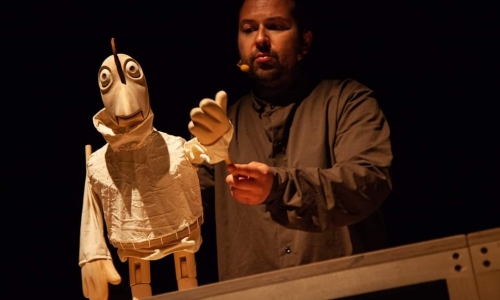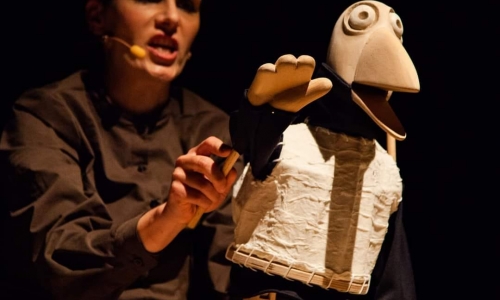Animal Tales

Based on Aesop’s fables
Text Author: Sivan Omerzu and Meta Brulec
Director: Silvan Omerzu
Puppet design: Silvan Omerzu
Scenography: Silvan Omerzu
Original Music: Vasko Atanasovski
Puppet Production: Silvan Omerzu and Žiga Lebar
Scenography Production: Žiga Lebar
Costume Production: Irena Jovanović
Translation: Nebojša Pop Tasić
Illustration: Silvan Omerzu
Graphic Design: Lazar Stanojević
Photographer: Lazar Stanojević
Cameraman: Zoran Laki Lazarević
Cast:
Vixen, Narrator: Milica Redžić
Crow, Narrator: Nevena Brzaković / Dubravka Brkić
Rooster, Rabbit, Narrator: Petar Lukić
Premiere: May 11th 2022
Age limit: 3+
Duration: 35 minutes
Director’s comment:
Once upon a time, man lived closely with animals, he domesticated some of them, he hunted the others or he was hunted. Thus it is understandable that animals have appeared in the oldest known stories. In many enlightening narratives which have survived till today, animals possess human features. These stories are called fables.
They were known even in ancient Egypt and India, and in Europe they were spreading mostly under the influence of Anctic Greece. Aesop, the most well-known narrator of all time, supposedly lived in Greece in the fifth century BC. He is said to have been from Phrygia, to have been a slave, to have had a hunchback, speech impediment and to have been executed in Delphi for blasphemy. Although there are no reliable proofs that he ever really lived, he is attributed to a number of various fables which have endured for 2500 years in oral tradition. The fables have had as many printed editions as no other book.
Aesop’s fables are usually short and funny, they express enlightening thoughts from everyday life with simple language. Every fable has an addition in the form of concise teaching or morale. Through irony and expressive doctrine they point out people’s mistakes. Aesop imitated Indian and Greek fables. It has never seemed unusual to us that animals speak human language, so we could, to a certain extent, consider them forerunners of comics and cartoons. During the Renaissance period, fables became a popular literary genre which authors wished to teach and educate readers with.







